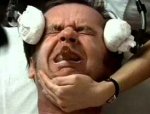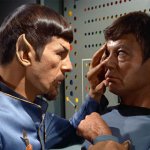GuitarLegend
New member
There is a cliché to mixing which goes something like, "Mix with your ears, not with your eyes"
This addressed the concept of trying to get the levels right by monitoring the level meters. I know we do that, we listen, we adjust, we listen again, we adjust again. When it sounds right, its almost done.
But if you are trying to teach someone who IS new to the game, I have been trying to come up with a visual concept to get the idea across. I know that it comes with experience. That's another cliché that doesn't really answer the question. It just puts off answering the question until the "student" has gained enough experience to draw on in order to perform the educated guesses that are part of the mixing process.
I know we do it with our ears and the levels are never constant enough to even start to show the average over time to compare that to what we hear. And even then, the quality of the particular track, the timbre of the instrument, a hundred other things can only be judged by the ear. But I still hear my students coming up with mixes where an instrument is a bit too high or low in the mix and its hard to describe the audible sense without some reference to a visual counterpart, other than plotting each track with a bar chart for example, to show the relative average levels that the ear is perceiving.
I am not even sure if I can phrase the question. And there may not be any other answer than, it comes with experience. But its frustrating to try to convey that experience to the student.
This addressed the concept of trying to get the levels right by monitoring the level meters. I know we do that, we listen, we adjust, we listen again, we adjust again. When it sounds right, its almost done.
But if you are trying to teach someone who IS new to the game, I have been trying to come up with a visual concept to get the idea across. I know that it comes with experience. That's another cliché that doesn't really answer the question. It just puts off answering the question until the "student" has gained enough experience to draw on in order to perform the educated guesses that are part of the mixing process.
I know we do it with our ears and the levels are never constant enough to even start to show the average over time to compare that to what we hear. And even then, the quality of the particular track, the timbre of the instrument, a hundred other things can only be judged by the ear. But I still hear my students coming up with mixes where an instrument is a bit too high or low in the mix and its hard to describe the audible sense without some reference to a visual counterpart, other than plotting each track with a bar chart for example, to show the relative average levels that the ear is perceiving.
I am not even sure if I can phrase the question. And there may not be any other answer than, it comes with experience. But its frustrating to try to convey that experience to the student.







